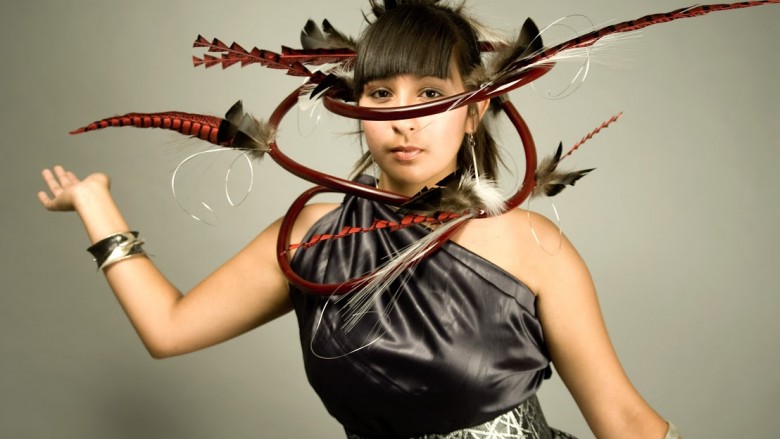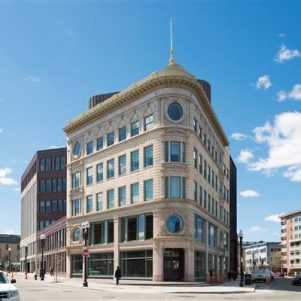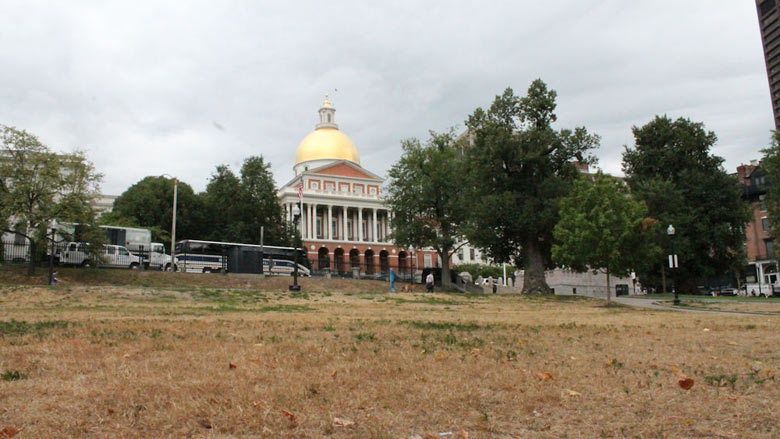American Indian fashion show with a traditional twist
By Diane Kilgore | November 23, 2015, 14:38 EST
 David Gaussoin and Wayne Nez Gaussoin (Diné [Navajo]/Picuris Pueblo). Postmodern Boa, 2009. Stainless steel, sterling silver, enamel paint, and feathers. Courtesy of the designers and the Museum of Indian Arts and Culture. Model: Tazbah Gaussion.
David Gaussoin and Wayne Nez Gaussoin (Diné [Navajo]/Picuris Pueblo). Postmodern Boa, 2009. Stainless steel, sterling silver, enamel paint, and feathers. Courtesy of the designers and the Museum of Indian Arts and Culture. Model: Tazbah Gaussion. “Fresh, relevant and a little bit sexy” is how Karen Kramer, the Peabody Essex Museum’s curator of Native American and Oceanic art and culture, describes its latest exhibit, “Native Fashion Now.” The museum’s collection of Native American artifacts is the oldest in this hemisphere and is one of the most important of its kind. Going beyond the present collection, this new full scale exhibition chronicles contemporary Native American fashions prompting reflection on cultural identity, politics and commerce.
The nearly 100 vibrant pieces reflect the history of Native Sovereignties in the U.S. and Canada in addition to the uniquely progressive ideations of each contributor. Atypical of Native American exhibits, 85 percent of the work represented is from living artists. As Kramer says, these artists are pioneering Native style-makers going beyond buckskin, fringe and feathers. Their work expands on tradition with the confidence to interpret culture in a cutting edge, sometimes provocative way.
To appreciate the influence of Native American design on mainstream culture, works by Donna Karan, Isaac Mizrahi, and Ralph Lauren are included in the exhibit. Juxtaposition of those “non-native riffs” with the works of Native artisans conceptually express where cultures fuse. As Native iconography continues to inform today’s style, traditional motifs are blending with new materials. Global audiences are demanding additional expressions of contemporary Native style in dresses, jewelry, accessories and hip street gear.
A fascinating commentary on cultural confusion is expressed by Patricia Michaels of Taos Pueblo. Michaels, a finalist in the 11th season of the popular TV series Project Runway, was told her dresses weren’t “Native enough” to express meaningful fashion statements. She softly responded in her native language that her designs could only be Native American, because that’s who she is. This designer only uses tribal inspirations in her creations. Suggesting her work lacked a clear Native narrative is a concern shared by many contributors to the museum’s exhibit. For them, cultural survival is an evolving creative expression that mustn’t be perceived as a phenomenon of the past or recognized as simple representational replication.
Metalsmith-jeweler Pat Pruitt of Paguate, New Mexico, a self-described half-breed who is of Chirachaua-Apache-white ancestry, is a tribal father in Laguna Pueblo. His spiritual heritage is so intensely personal he prefers to say that his art pushes beyond the limits of Native American thematic expression but is born of technology and the colors of river beds. He aims to balance hardness with grace using stainless steel and sting-ray leather. His art is respectful of village traditions and rejects static market showcases designed to undermine Native American creativity.
Experiencing the exhibit first hand re-frames outdated impressions of Native America. “Native Fashion Now” reflects the evolving aesthetic of fashion mavericks whose creativity rejects artistic conformity yet simultaneously embraces a rich cultural history.
The exhibit, which opened Saturday to begin its U.S. tour, is open through March 6. It will then move on to the Portland Art Museum in Oregon, the Philbrook Museum of Art in Tulsa, Oklahoma, and ending up at the Smithsonian Institution’s National Museum of the American Indian in New York in 2017.











